Review for Star Trek: The Complete Original Series (Seasons 1-3)
Introduction
Shelf space, the final frontier! Can you actually believe that I’m upgrading my Star Trek the Original Series collection from VHS to Blu-ray? That’s going to net me a whole lot of shelf space to clear some boxes from my floor storage system. I’ve been collecting, double dipping, and upgrading my collection for years, and I’ve still got VHS tapes to replace with more convenient discs. Now I’m at the point where I’m missing out a whole generation of entertainment technology. I never got around to getting the original series on DVD, as I had watched the original series on tape so often that I’d practically memorised the show. But after a decade or so of dithering, I finally felt in the mood for the original Trek, and by this time it had been re-mastered and cleaned up for HD broadcast and distribution. I can watch the show in high definition, the way it was never meant to be seen.
You may ask why I went for the US release, as opposed to the UK boxset. I saw the UK release on shop-shelves a few years ago, and while the small box looked pretty, it seemed a little too small to hold 20 discs. Sure enough, it turns out that it’s one of those releases where the discs are placed in card holders, a packaging formula which delivers optical discs pre-scuffed. Worse, when I happened across an un-boxing video on Youtube, I watched an eager Star Trek fan open up his new collection to have half of the discs simply fall out. That doesn’t instil me with confidence, which is why I went for the US Complete Collection. No fancy packaging, it just bundles the three existing season collections together, with the discs safely held in nice, plastic Amaray style cases, just as The Great Bird of the Galaxy intended.
The opening monologue really says it all. “Space, the final frontier. These are the voyages of the Starship Enterprise, its five year mission, to seek out new life and new civilisations, to boldly go where no man has gone before.” You don’t need a whole lot of back story or excessive continuity to keep track of what’s going on, and that serves better than anything I could write as a story synopsis. Besides, Captain Kirk’s five year mission, truncated to three due to early cancellation, has gained a ubiquitous presence in pop culture to a degree that more people know what Star Trek is than those who don’t. There’s the Starship Enterprise under Captain Kirk, with a half-alien first officer named Spock with pointed ears, green blood, and a penchant for logic, and the irascible and emotional Doctor McCoy. Together with Chief Engineer Scott, Helmsman Sulu, Communications Officer Uhura, and from the second season, navigator Chekov, every week they would go an another new fantastic adventure, somewhere in the universe, encountering strange godlike aliens, menacing computers, pernicious Klingons, proud Romulans, cute Tribbles and Harry Mudd.
Seventy nine episodes of Star Trek, plus the pilot episode, The Cage are presented in three season collections bundled together here, along with extra features, with the episodes re-mastered from the original film for HD presentation. Through seamless branching, you can watch the episodes with enhanced and updated special effects and with surround sound, or with the original effects and mono audio.
To save on space in this review, you can click here to take in the episode distribution and the extra features in this collection.
Picture
Star Trek was never meant to be seen in this manner. It’s a 1960s US television programme after all, made to be watched on 480 line, interlaced colour television sets (although most people would have seen it on lower resolution black and white TV when first broadcast, especially in the UK), cathode ray tubes at that, pre transistor age, sets that would hardly show the image as broadcast, let alone as filmed. After all, NTSC was disparagingly referred to as Never The Same Colour. And now we get to see Star Trek in pixel perfect 1080 line progressive HD. This is down to the fact that Star Trek was shot on film back in the sixties, and it was completed in post production that way too, and as we all know, 35mm film offers substantially more resolution than even 1080p HD. So much so, that the worry is that the seams will now show in Star Trek, the wires holding up the models, the seams of Spock’s ears, the weave of hairpieces, and the flimsiness of the sets.
I have to say that Star Trek looks pretty damned fine in its 1080p 4:3 pillarboxed glory, maintaining the original aspect ratio (a fine change from those bastardized widescreen TV broadcasts). You’re obviously not going to get the razor sharp image of modern releases, and besides the obvious Vaseline softness that appears whenever a female wanders into shot, a smidge of softness is perhaps warranted in maintaining that sixties television look, and not showing too many of those seams that I mentioned earlier. The film source has had the general clean up that such material has, the automated pass through to eliminate any major damage and instability, and the by hand clean up to get rid of residual dirt and damage. It’s also been tweaked to bring out the best of the film’s colour palette. You’re not going to get away from the age of the material though, certain frames are faded, there’s a bit of flicker at times, most notably a pulsating in brightness in the final 15 minutes of Court Martial.
By and large, the HD presentation offers a whole new viewing experience, especially compared to the VHS tapes that I’m replacing with these Blu-rays. Colours are rich and vibrant, detail levels are high, and you can see the richness and quality of the set design and especially the costumes, was all definitely made with the film format in mind, not just television. While some of the sets are admittedly barebones and flimsy, for much of the show, you have to wonder if the producers had some premonition that someone would one day invent HD. I was thrilled by the Devil in the Dark episode, which revealed such richness and vibrancy of set design and coloration, in what were originally just bland, dark cave sets, that I felt I was watching the show for the first time. The same goes for the castle in The Squire of Gothos, furnishings and fabrics that would have been wasted on the original TV viewers.
Of course the big draw, or for some the big bone of contention, are the new effects sequences. As well as clean up the print, they’ve gone and updated the effects for modern audiences, but in a way that suggests what the makers of Star Trek would have done if they had CGI back in 1966. You now have brilliant, photo-real planets, CGI starships, and rich, detailed and moving matte paintings, all done in the style of the original series, but with the complexity and dynamism that modern sci-fi fans have come to expect in place of the usual handful of stock shots that were all that a show like Star Trek could rely on. Initially I found them a success, not a distraction, and you get to see the Klingon ships in Errand of Mercy now, you get to see a massive aurora on the radiation bathed planet in This Side of Paradise, you get to see where the ion pod was ejected in Court Martial, and the consequent damage on the Enterprise. But the more I watched the shows, the more I found myself picking nits with the new effects, and found that they weren’t actually in tune with the actual show, and felt more like a fanboy adding kewl to the episodes. And once in a while you have a show like The Galileo Seven, with really laughable and inconsistent CGI applied to the shuttlecraft sequences, and you have to be thankful that the original versions are also accessible on these discs.
Unfortunately, the original effects footage hasn’t had the same care and attention as the re-mastered footage. While the scenes with the original matte paintings match the rest of the footage in terms of colour and clarity, they are a little more prone to dirt and scratches, but the real disappointment is in the spaceship scenes, which look to have had no restoration to them at all, merely transferred from the original film as is. Also, the upgraded version of Friday’s Child in Season 2 lacks the same level of restoration, with only some of the scenes getting the new colour timing, the other scenes retaining far more grain, faded colour, and on a rare occasion, even looking up-scaled, the same is also true, although to a lesser degree for Assignment: Earth.
Note that the extended version of The Cage on the final disc is presented in 480i SD format and without the optional updated effects track. It’s the version that was initially ‘rediscovered’ in the mid-eighties, and I remember watching it on TV as part of the 20th Anniversary celebrations as the ‘lost’ episode. At the time it was discovered as a black and white print, and the existing colour elements were sourced from the Menagerie double episode, and that’s how it’s presented here, in colour and black and white, bookended by a piece to camera from creator Gene Roddenberry.
Sound
You have the choice between DTS-HD MA 7.1 Surround English, DD 2.0 mono English, Spanish, and French, with subtitles in these languages and in Portuguese. The re-mastered version defaults to the surround sound, while the original version defaults to mono, but you can chop and change. As I watched the re-mastered version first, I naturally stuck with the surround track, and it’s a nice affair, certainly enveloping the viewer with the theme music, recorded afresh for the HD release, while the show itself remains faithfully front and centre, with the surrounds used for subtle ambience, and the more obvious of effects. It’s not great though, especially early on, with the overall volume level low, and for the first few episodes, the balance weighted against dialogue. It sorts itself out around ten or so episodes into the first season.
It seems that when they re-mastered Star Trek, they did so from the original film elements, re-compositing the episodes with the updated effects. To paraphrase Vina in the Cage, they had all the pieces, but it seems they forgot how to put them back together exactly. Certainly early on in the first season, there are more than a few pops in the soundtrack, while later on, you might find the audio sync drifting in a cut here or there. One disappointing example would be the ‘Mechanical rice picker’ line in The City on the Edge of Forever.
Once again, the real disappointment is with the original versions of the episodes. The DD 2.0 mono track is supposed to be the original audio, but with the show being reassembled from the original film, the audio has to be massaged to fit. That takes as much effort as the re-mastered audio. After episode 12 on season 1, Menagerie Part 2, they just give up, and instead down-mix the re-mastered audio into mono. You might wonder what difference that makes, but with the re-mastered video, they altered the sound mix to match the updated effects. One big difference is ship rumble. In the rest of season 1, the Enterprise now rumbles as it flies by, to match the starships of The Next Generation and beyond. The original series ship was silent in space. And in shows like Errand of Mercy, and The Galileo Seven where the effects shots are substantially different, the re-mastered sound effects don’t match the original effects shots. And even in the first twelve episodes where we ostensibly have the original mono soundtrack, they’ve gone and included the new version of the theme tune. When I sampled an episode from season 2 to check the mono audio however, it was back to how it should be, with silent spaceships, and sound effects matching the original visual effects, much better given that they really went to town updating the effects shots in season 2. (It's since come to my attention that I sampled the 'wrong' episode, and that engine rumble is still extant in most later season episodes as well.)
Conclusion
I will never watch TOS-R again. They’ve Lucased it. No worse than that, they’ve Red Dwarf-ed it. You probably don’t remember, but long ago, before the invention of DVD, the BBC went back to the first three series of Red Dwarf, and re-did the effects with CGI, and gave the episodes the filmic post-production treatment to make them consistent with series 7 and 8. Those CGI re-mastered episodes are rarely seen now, and people by far prefer the original versions. If there is any justice, these re-mastered versions of the original Star Trek will also fade from memory in ten or twenty years, and fans will once again simply cherish and treasure the original series, as it was made way back in the sixties. The next time I put these discs into my Blu-ray player, it will be the original versions that I watch.
The biggest problem is inconsistency. This was a once in a lifetime opportunity to get Star Trek looking fantastic, and it needed a light touch, with as few stylistic changes as possible. In a perfect world, they’d have just rebuilt the original models and shot them with motion control, the way the Trials and Tribbleations episode of Deep Space Nine did. But no, this time the digital artists were let loose on Star Trek, while lacking the time and the budget to get it right first time. Sure, the CG Enterprise looks fantastic at times, but it’s actually inconsistent from episode to episode. Sometimes it looks real, fantastic, realistic lighting, graceful elegant motion, but sometimes it looks like a plastic model, poorly rendered, invoking geeky cries of ‘low polygon count’. The shuttle effects are invariably poor and laughable, some of the directorial choices for the new effects shots are obviously made by software engineers rather than dramatists, and some changes just had me hanging my head in my hands. For every five shots that blend in, there’s one that might make you go wow, but there will be two that make you cringe. And none of this is really visible on the widescreen SD broadcasts of re-mastered Star Trek that are shown on TV, it’s only when it’s HD that you realise that while the rest of the episode might have natural film grain, none of the space effects shots do.
My personal whinge is that it’s not in production order. For years I’ve been watching Star Trek on VHS, in production order, putting The Cage first, not last, followed by Where No Man Has Gone Before, The Corbomite Manoeuvre, Mudd’s Women and so on. The Blu-rays show them in broadcast order, which puts the monster episode first, Man Trap. I always found broadcast order adds more inconsistency and lack of continuity to the look of the show, the development of the cast, whereas with production order, it shows a more natural progression in the look of the show for the first ten episodes. And Season 3 should begin with the brilliance that is Spectre of the Gun, not the bilge that is Spock’s Brain, a show that makes you want to forget that the final season ever existed.
I also get the feeling that the show could look better. Certainly I feel that five hours of video per Blu-ray disc is pushing it a tad and some of the episodes don’t look as good as other TV shows mastered from film have looked on Blu-ray, softer and less detailed. How much of that is down to the post-production and colour timing, as well as ‘restoration’ is another question. They decided to bring the green out in Kirk’s command shirt (it was always green-ish, it only came out yellow in the broadcasts), and as a whole, this HD Star Trek looks a little darker than the previous VHS and DVD releases, as well as the broadcasts. There’s also that annoyance of season 1, which sees the original audio track nixed for the latter two thirds of the season, in favour of a down-mixed version of the re-mastered audio, complete with unnecessary starship rumble. And even where there haven’t been such drastic changes, there are little alterations in the original versions of the episodes to accommodate for re-mastered versions, colour timing being one. There will be a part of me looking for another Blu-ray release of Star Trek the Original Series, hopefully in production order, but at least with the original, original versions of the episodes as opposed to the compromises we get here, and with all this re-mastered CGI nonsense dispensed with. Still, they have restored “Goodnight Sweetheart” to The City on the Edge of Forever, a song that was omitted due to rights issues from the VHS release.
Just as I’m waiting for the original Star Wars trilogy on Blu-ray, I’ll be looking forward to a better release of Star Trek as well, not that it’s likely at this juncture. Still, it does look and sound much better than the VHS tapes and the DVDs, unwelcome changes included, and I no longer have to worry about that chewed up lead in to That Which Survives in my video collection, and best of all, I’ve just saved over a metre and a half of shelf space, or rather cleared a meter and a half of Blu-rays off the floor. So what of the show itself?
What can I write now about a show that everyone knows? What can I say that hasn’t been said before? Reams and reams have been written about Star Trek, critics and fans have analysed it backwards and forwards, and its legacy is indisputable; The Animated Series leading to six motion pictures with the original cast, The Next Generation running for seven years, four more movies with that cast, seven years of Deep Space Nine, then of Voyager, four years of Enterprise, the J.J. Abrams reboot and its sequel with another in production. There are video games, soundtrack CDs, almost a thousand spin-off novels in Trek Literature, comic books, and in recent years, fan productions now populate Youtube, recasting the familiar roles and continuing the original adventures, as well as former cast members and professional actors taking part in unofficial spin-offs online. Thanks to Paramount and CBS’s generous policy regarding fair use, Star Trek truly belongs to the fans in a way that’s unprecedented in entertainment history. Just go onto Youtube and look for Star Trek Axanar or Renegades to see what might be the future of the franchise.
It all began with a small, sci-fi television show, which failed to reach the expectations of the network in an era where networks were yet to discover demographics. One thing I discovered watching these episodes, a decade and more is too soon for me to re-watch them, as I still know them backwards. I was an obsessive fan in my youth, and must have watched those videotapes some twenty times. Back when I had a lot more free time, I actually started writing reviews for each of the episodes, a couple thousand words of analysis for each one, but I doubt that you’d appreciate me adding that much text to this review. Besides, I got midway through season 3, and my heart wasn’t in it anymore and real life beckoned, another project left incomplete halfway through. Although that is some indication of what you get with Star Trek; two astounding seasons of sci-fi television, some really high quality writing and performances, stories that entertain, thrill, and challenge the mind, make us look at the world anew. Then in the third season, following the battle with the network, the departure of Gene Roddenberry as full-time producer, and the shift to the Friday night graveyard slot, the quality plummets, and Star Trek becomes another cheesy, average, sixties sci-fi show, although it never quite hits the nadir of Lost in Space.
Star Trek begins with such a great premise, an optimistic future world where mankind has solved most of its problems, and is looking outwards, expanding the frontiers of knowledge and exploration, meeting other races, and working together with them to create a positive, meaningful society. With this philosophy of peaceful exploration in the background, we get the adventures of the Starship Enterprise and its crew, every week heading to a new world, to discover new life, and face challenges, solve problems with intellect and the mind, violence only being a last resort. Driving the drama of the show was the lead triumvirate of the series, Kirk, McCoy and Spock, the latter representing the mind, McCoy the heart, and Kirk the instinct. Together the three could achieve what they couldn’t separately. They’re such iconic characters that it seems pointless to really add more.
The same is true for the supporting cast, except that in subsequent years they appear to have got retconned into being as significant as the big three, but really they actually only shine in the occasional episode. Of Sulu, Chekov, Uhura and Scotty, the latter really only has the most significant and consistent role. Like any series, it took a while for all the pieces to fall into place, all the characters to resolve. Starfleet and the Federation aren’t introduced for some 10 episodes or more, Spock’s still impishly smirking on occasion in the first few episodes, the Mind Meld doesn’t arrive until Dagger of the Mind, so Star Trek really was evolving over its first season, but unlike later shows such as TNG and DS9, the writing was always razor sharp, the stories always smart, engaging and interesting.
With Season 1, it’s easier to list the dross, rather than the highlights. The Alternative Factor is a narrative mess, poorly put together, confusing, and with an ill-thought out concept. The guest star isn’t all that convincing in the role of Lazarus either. Return of the Archons is surprisingly average for the first season, a show that really fails to sell its concept, and doesn’t inspire dramatically. For some reason, I’ve never really warmed to Operation Annihilate! either, which lacks suspense, is repetitious, and again suffers from poor science.
But the rest of the season 1 episodes I enjoy whenever I watch them, flaws and all, and some of them, like Miri or The Man Trap, or Dagger of the Mind do have their flaws. But the writing is good enough, the actor performances strong enough to make even the otherwise weaker Season 1 episodes more than watchable. As for my favourite Season 1 episodes, here’s a long list... Where No Man Has Gone Before, The Naked Time, Mudd’s Women, The Corbomite Maneuver, The Conscience of the King, Balance of Terror, The Galileo Seven, The Squire of Gothos, Arena, Tomorrow is Yesterday, Court Martial, Space Seed (Khaaaaaaannn!!!), A Taste of Armageddon, The Devil in the Dark, Errand of Mercy, and what might still be after all these years, the best hour of sci-fi television ever made, The City on the Edge of Forever.
Season 2 is also remarkably light on duffers, which for me really just amounts to the ill conceived Halloween episode in Catspaw. The rest of the episodes are really quite good, especially as by this point Star Trek has found its consistency of characters, and established its universe. My favourites in this season include Amok Time, Mirror, Mirror, The Doomsday Weapon, I, Mudd (I really like this trickster character), Metamorphosis, Journey to Babel, Obsession, The Trouble With Tribbles, A Piece of the Action, By Any Other Name, The Omega Glory, The Ultimate Computer, and Bread and Circuses.
It’s Season 3 where the rot starts to set in, kicking off here with the derisory Spock’s Brain (anyone want a remote control Spock?), while the Paradise Syndrome always sticks in my mind as the one with the constipated Injun. And the Children Shall Lead is memorable as the one where the guest star dropped out, so they cast a Hollywood Lawyer instead. The Empath is the one with the mime, The Mark of Gideon is another one that needed its premise examined, The Way to Eden, the one with the space hippies always puts me to sleep, the Savage Curtain is silly, while Turnabout Intruder has some ill conceived misogyny at its heart, a poor way to end the series.
Still, Season 3 does throw up a couple of gems, with the Enterprise Incident a strong show about the Romulans, I love The Spectre of the Gun as I previously mentioned, in fact all of disc 2, with Day of the Dove, For the World is Hollow, and The Tholian Web, and Plato’s Stepchildren all play like Season 2 episodes. Elaan of Troyius is fun, while Let This Be Your Last Battlefield may be clumsy with its allegory about racism, but its heart is in the right place. Requiem for Methuselah is a great idea, while before bowing out, Star Trek does give a great Spock and McCoy episode in All Our Yesterdays.
I still love Star Trek, although not as obsessively as I used to. The Blu-rays are good, but not great, and they really could have been better. Like I said, I’ll never watch the re-mastered versions again, and I am holding out for a decent release of the originals, as there are one or two too many niggles with them on this release. Where Paramount continue to fall down is when it comes to extra features, with most of the extras in this collection simply recycled from the last DVD release. But I can’t deny that for two seasons at least, Star Trek really is classic, unbeatable sci-fi television, and there’s enough in the poorer quality third season to make it watchable, even enjoyable. Now excuse me, I have to take 40 videotapes to the skip.
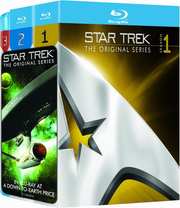

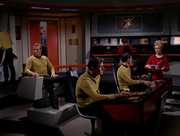

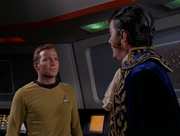

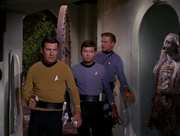
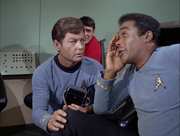

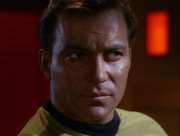
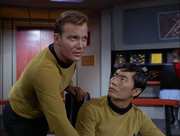
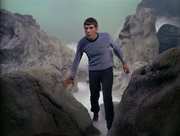
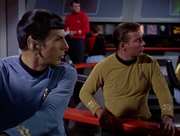
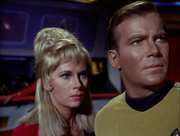
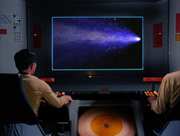
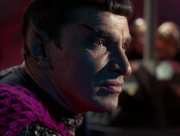

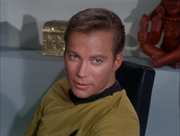
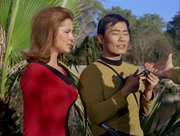
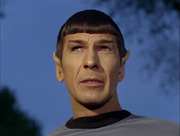
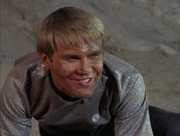
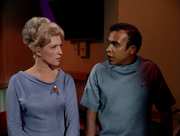
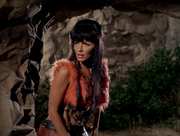
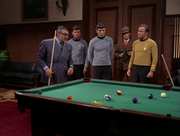
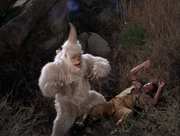
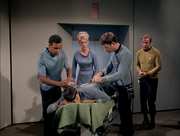
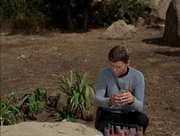
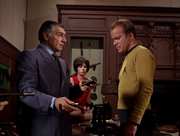
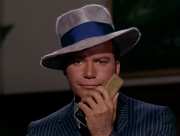
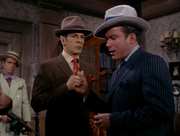
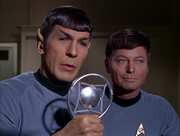
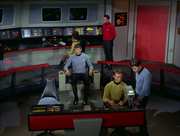
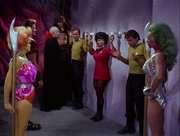
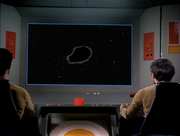
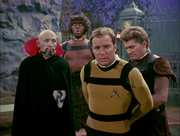
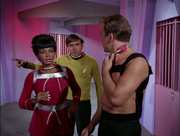
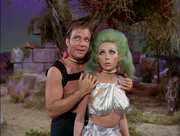
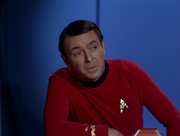
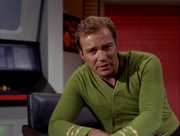
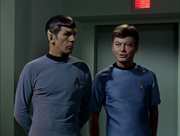
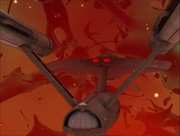
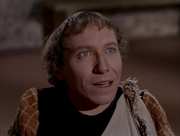
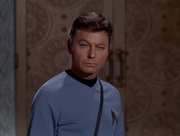
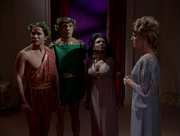
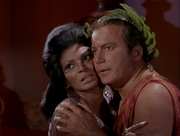

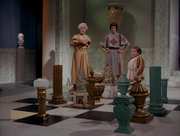
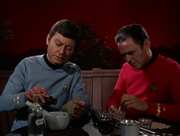
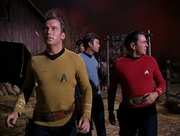

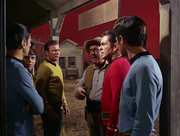
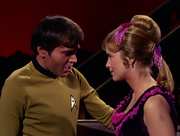
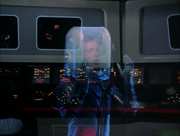

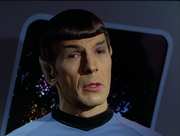
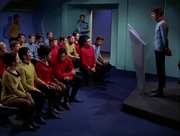
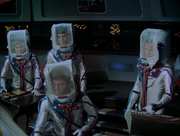
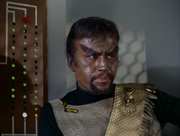

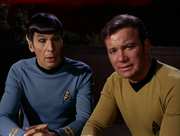
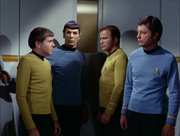
































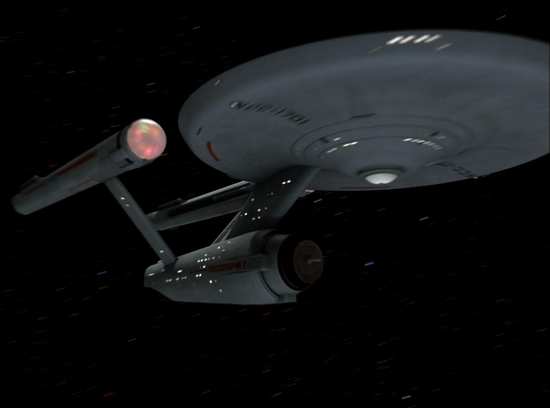

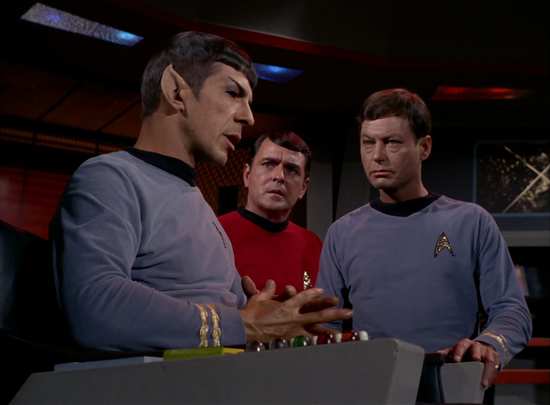
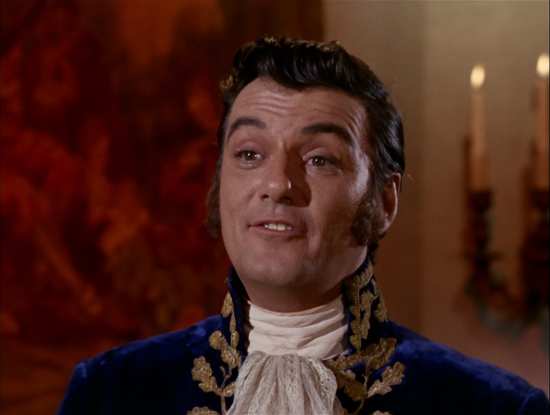



















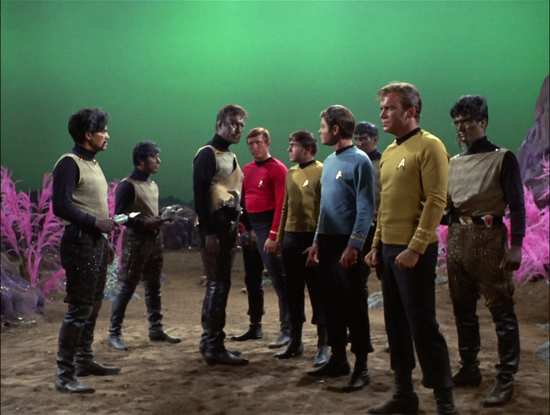

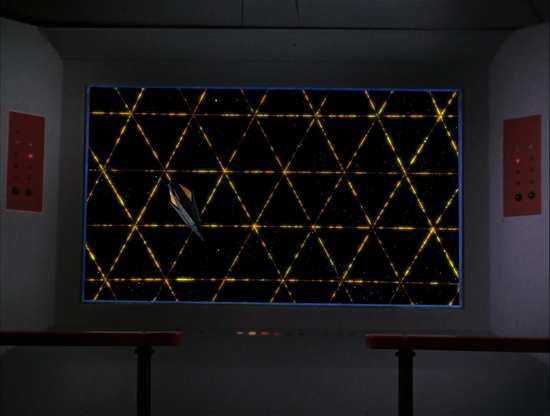

Your Opinions and Comments
Be the first to post a comment!